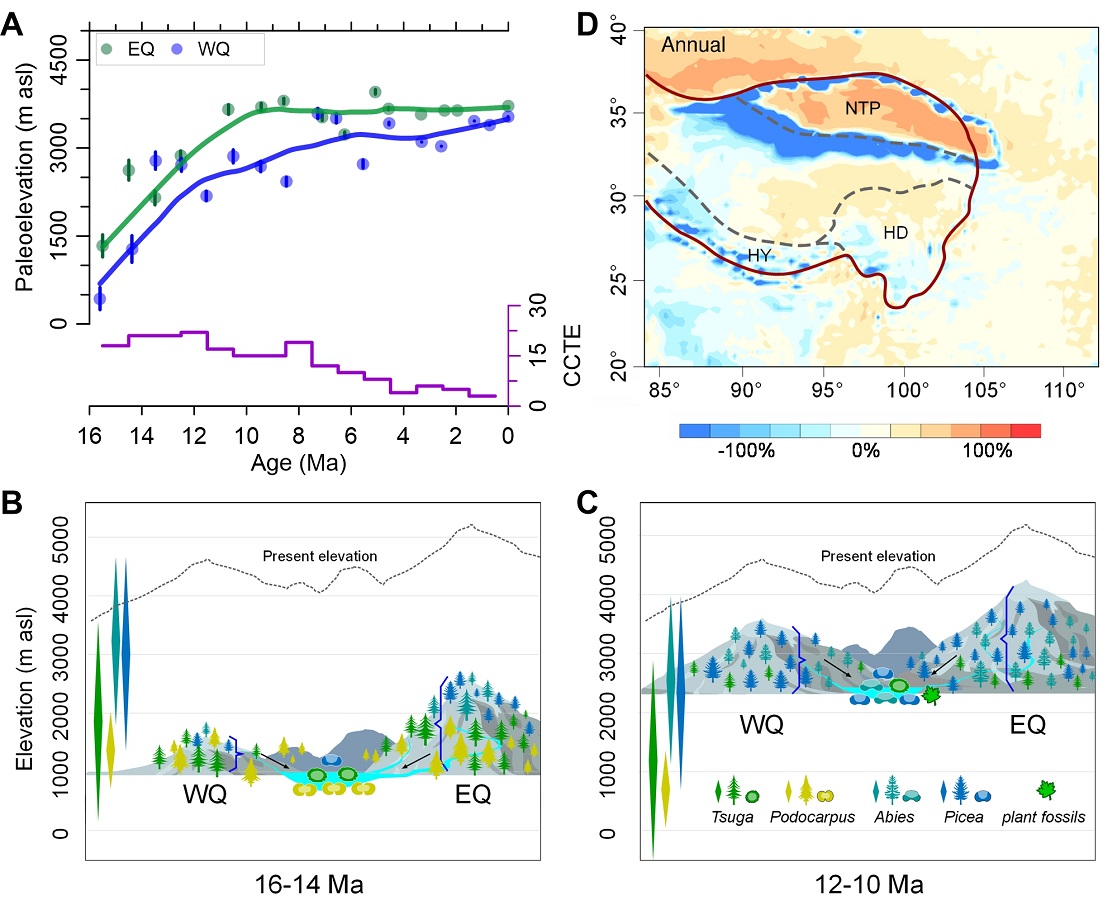Study Reveals Strong Uplift of Northeastern Tibet Plateau in Late Miocene
Updatetime:2022-12-09From:
【Enlarge】【Reduce】
The uplift of the Tibet Plateau is considered to be the main driving force behind evolution of the Asian monsoon-arid climate as well as biodiversity in the region. Surface elevation is the intuitive expression of tectonic uplift, but quantitative reconstruction has always been a difficult problem.
Plants are the primary producers in the surface ecosystem and their distribution is predominantly controlled by climate and topography. Pollen, i.e., reproductive cells retrieved from plants, have the advantage of large yield, easy preservation and good continuity, which is the "key" to discovering the past.
Now, a joint research team led by Prof. FANG Xiaomin from the Institute of Tibetan Plateau Research of the Chinese Academy of Sciences (CAS), Prof. MIAO Yunfa from the Northwest Institute of Eco-Environment and Resources of CAS and Prof. HUANG Kangyou from Sun Yat-sen University has exploited the potential of pollen in paleoelevation reconstruction.
The researchers constructed a new paleoaltimetry based on four montane conifers (Tsuga, Podocarpus, Abies and Picea), thus allowing them to reconstruct the mid-range paleoelevation sequences of the northeastern Tibet Plateau since the middle Miocene. Their research reveals that the region experienced strong uplift about 11 to 7 Ma (million years ago) that exerted strong environmental effects.
The study, "A new biologic paleoaltimetry indicating Late Miocene rapid uplift of northern Tibet Plateau," was published in Science on Dec. 8.
The researchers used a total of 3,088 surface pollen samples to create a quantitative formula that converted the ratios of Tsuga, Podocarpus, Abies and Picea into elevation values.
After passing a reliability test in five Quaternary and six Miocene sites in the Tibet Plateau, as well as one near sea level in Japan, this formula was applied to the northeastern Tibet Plateau. The researchers looked at data beginning 16 Ma in two parallel series. The results showed elevations of ~1.3 km and ~0.4 km 16–14 Ma. Elevations rose rapidly to ~2.9 km and ~2.7 km 13–10 Ma, and to ~3.6 km at 8–7 Ma, respectively.
"The basin was ~1.1 km at 16–14 Ma and uplifted to 2.4 km at 12–10 Ma according to the newly discovered plant fossils based on the Climate-Leaf Analysis Multivariate Program," said Prof. MIAO.
Moreover, the researchers used the regional climate model RegCM 4.6 to quantitatively assess the influence of altitude on precipitation. They found that when the northeastern Tibet Plateau was reduced to one-third of its current elevation, annual precipitation in this region was reduced by more than 50%, while precipitation in the Himalayas in the south and Hengduan Mountains in the southeast would increase by 50% and 150%, respectively. This precipitation eventually supported the rich biodiversity in this region.
This study shows that climate effects produced by the uplift of the northeastern Tibet Plateau have affected the climate and biological evolution of the region.

Northeastern Tibet Plateau uplift and impact on precipitation. (Image by MIAO Yunfa)
Contact:
MIAO Yunfa
E-mail: miaoyunfa@lzb.ac.cn
Appendix




